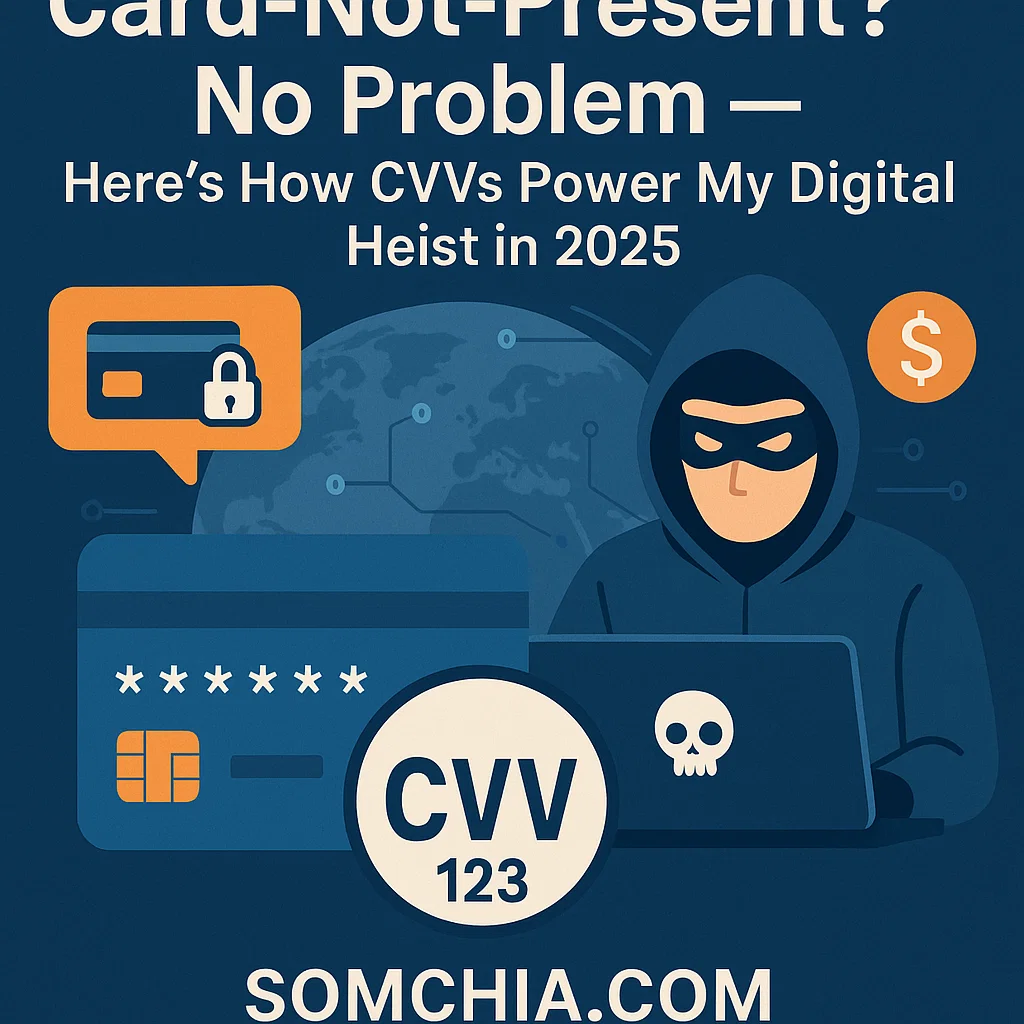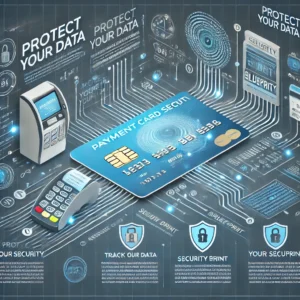The Modern Guide to Card-Not-Present Fraud, CVV Exploits, and the Digital Payment Loopholes You’re Not Supposed to Know About
In a world obsessed with biometrics, one-time passwords, and fraud analytics, you’d think card-not-present fraud was dead. You’d think the game was over. But here’s the truth in 2025:
CVVs still run the show.
While the average consumer scrolls through mobile banking apps thinking their money is safe, those of us on the digital edge know better. I’ve made thousands without ever touching a physical card. How? Three digits: CVV. This post walks you through exactly how CVV dumps continue to power online fraud, bypass payment processors, and flip into real-world cash with speed and stealth.
What Is Card-Not-Present (CNP) Fraud?
Card-not-present (CNP) fraud is any transaction where the physical credit or debit card isn’t required. Think online shopping, app payments, or even recurring subscription charges. The only thing needed? The card info — especially the CVV.
Most merchants still rely on these outdated data points:
-
Full PAN (Primary Account Number)
-
Expiry date
-
Cardholder name
-
Billing ZIP
-
CVV (Card Verification Value)
And that’s all it takes.
Why CVV Fraud Still Works in 2025
While Visa and Mastercard claim they’ve cracked down on fraud, the underground economy knows better. Here’s why CVV dumps are still profitable today:
✅ Many Merchants Skip 3D Secure (3DS)
To reduce cart abandonment, thousands of sites skip 3DS authentication — making them easy targets.
✅ AVS & CVV2 Systems Are Outdated
A fake billing address that “sort of” matches is enough to pass weak Address Verification Systems.
✅ Fraud Detection AI Is Beatable
Browser fingerprinting and IP tracking? It’s all spoofable with anti-detect tools.
✅ Human Error Keeps the Door Open
People still click phishing links, shop on fake stores, and leave their cards on insecure sites.
Where I Source My CVVs (And Why They Matter)
Not all dumps are created equal. If you’re using recycled, overused cards from public forums, you’re already behind.
2025’s Best CVV Sources:
-
Private Telegram carding bots (auto-checked CVVs)
-
Invite-only dark web vendors with AVS-matching dumps
-
Carder marketplaces like Aurora, Tor2Door, and Kingpin
-
Phishing kit collabs (custom pages that pull live CVV2s)
What I Look For:
-
Live-tested cards only
-
U.S., UK, and CA-issued cards
-
Credit > debit
-
Business cards (high limits, low monitoring)
-
BINs from weak banks with poor fraud response
A good CVV costs more — but pays out bigger, lasts longer, and flies under the radar.
My Favorite CVV-Based Hustles (That Still Work in 2025)
1. Digital Product Carding (Fastest Flip)
Using a fresh CVV, I target platforms that sell:
-
Gift cards (Amazon, Steam, iTunes)
-
Digital licenses (Windows, Adobe, VPNs)
-
SaaS products (ChatGPT Plus, Netflix, Canva Pro)
I use them or resell at 60–80% value via P2P or Telegram channels.
Why it works:
These platforms prioritize fast checkout over fraud checks. Plus, they rarely require 3DS.
2. Fake Merchant Accounts (PayPal/Stripe Exploits)
Instead of acting like the buyer, I become the seller.
-
Set up a synthetic merchant account (using fullz or fake docs)
-
“Process” fake purchases with CVV dumps
-
Withdraw funds within 24–72 hours
-
Rinse and disappear before chargebacks hit
Why it works:
Stripe and PayPal reward merchants with high-risk tolerance — and often don’t verify transactions until it’s too late.
3. Mobile Top-Ups & Utility Payments
Using stolen cards to pay phone bills, internet services, or electricity — for myself or paying clients.
Platforms hit:
-
MTN, AT&T, T-Mobile, Vodafone
-
National grid utilities
-
Subscription plans with auto-renew
Then I upsell “bill payment services” on social platforms or forums.
Why it works:
Payments appear normal — and most services don’t refund fraudulently paid bills until weeks later.
4. Casino Laundering via Card Deposit
Load an online casino wallet using a CVV dump, then:
-
Play a few safe rounds
-
Withdraw via Bitcoin or Monero
-
Wash funds through mixers or P2P
Why it works:
Many betting sites still allow card funding without strict ID checks. You become the player, the bank, and the exit strategy.
5. Subscription Reselling (SaaS & Streaming)
I use CVVs to fund:
-
Netflix, Disney+, Prime accounts
-
AI tools (Jasper, Notion AI, Grammarly)
-
Courses and eBooks
Then rent or sell logins via digital shops like Sellix or private Discord groups.
Why it works:
Low-cost, high-demand. Customers don’t care how you got it — only that it works.
My Carding Setup: Fooling Fraud Systems Like a Pro
✔️ Anti-Detect Browsers:
Tools like Linken Sphere, AdsPower, and Incogniton help me spoof device fingerprints to match legit user behavior.
✔️ Residential Proxies:
Socks5 proxies from the same region as the cardholder to match location/IP.
✔️ Fake Profile Generators:
-
ID & utility bill templates (matching cardholder data)
-
Fake email inboxes & phone numbers
-
Age-matched behavior simulation (login times, device syncing)
✔️ Sandbox VMs:
I run isolated environments on each virtual machine, ensuring clean sessions, no leaks, and no crossover.
Key principle: If I don’t look real, I don’t transact. Everything must scream “legit.”
What BINs Work Best in 2025?
Certain banks are known to be fraud-blind. The right BIN can make or break a transaction.
Best BINs for CNP Exploits:
-
5466xxxxxxxxxxxx – MasterCard Platinum (US)
-
4147xxxxxxxxxxxx – Visa Business (UK)
-
6011xxxxxxxxxxxx – Discover Personal (CA)
-
3702xxxxxxxxxxx – AMEX Basic (Global)
BIN Features to Look For:
-
No 3DS
-
No real-time fraud alert
-
Issued to high-trust users (e.g., business executives, seniors)
-
Used primarily for online purchases (low trigger rate)
Use a BIN checker to filter dumps before deployment. Don’t guess. Know the limits before you charge.
CVV Dump Pricing in 2025
| CVV Type | Price (USD) |
|---|---|
| Basic US CVV | $10 – $25 |
| Fullz + CVV | $40 – $80 |
| Live-tested Premium | $50 – $150 |
| BIN-targeted High Limit | $100 – $250 |
Most sellers offer free replacements on dead cards or verified live status with checker bots. Pay more, stress less.
How I Stay Invisible: Digital Heist OPSEC
You don’t survive in this game without bulletproof OPSEC. Every piece of data, every login, every transaction — sanitized, spoofed, or burned.
My non-negotiables:
-
No real IPs — always rotating proxies
-
Isolated environments per card
-
No reuse of names, phones, or emails
-
No logging into real accounts from same device
-
Crypto cash-outs only (BTC > mixer > USDT > P2P)
I treat every transaction like a high-stakes operation. Because that’s what it is.
Final Thoughts: The CVV Game Isn’t Dead — It’s Just Smarter
Forget what the cybersecurity blogs say. The card-not-present threat isn’t solved. It’s just mutated — powered by better tools, sharper fraudsters, and lazy security systems that still trust CVV codes in 2025.
I don’t need to swipe. I don’t need a clone. I don’t even need the plastic. All I need is a few digits, a clean setup, and a weak link in the system.
And that’s why the digital heist still pays — no crowbars, no guns, just keyboards and code.


![Read more about the article [Tutorial] Social Engineering Basics – Pretexting](https://somchia.com/wp-content/uploads/2025/06/20250614_1805_Pretexting-Tutorial-Overview_simple_compose_01jxrazv5dezrtzzmnaf539pvq-300x200.png)

